BMW ActiveE drivers can reduce their dependence on fossil fuels even more
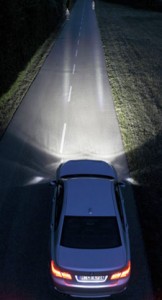 BMW of North America recently announced that it is partnering with Real Goods Solar to offer BMW ActiveE drivers the potential to get all the energy to charge their EV at home from sustainable solar energy. Real Goods Solar will install solar panels on the homes of ActiveE drivers, known as Electronauts, at a substantial savings of approximately 35 percent. The Real Goods Solar – ActiveE residential system is offered exclusively to Electronauts. Lease and purchase options will be available to suit the residential energy and charging needs for BMW’s EV drivers. Real Goods Solar will provide a premium offer to design, install and monitor a turn-key solar solution to all ActiveE customers in California, New Jersey, Massachusetts, Connecticut and New York.
BMW of North America recently announced that it is partnering with Real Goods Solar to offer BMW ActiveE drivers the potential to get all the energy to charge their EV at home from sustainable solar energy. Real Goods Solar will install solar panels on the homes of ActiveE drivers, known as Electronauts, at a substantial savings of approximately 35 percent. The Real Goods Solar – ActiveE residential system is offered exclusively to Electronauts. Lease and purchase options will be available to suit the residential energy and charging needs for BMW’s EV drivers. Real Goods Solar will provide a premium offer to design, install and monitor a turn-key solar solution to all ActiveE customers in California, New Jersey, Massachusetts, Connecticut and New York.
“Our relationship with Real Goods Solar is an ideal complement to the BMW ActiveE experience. It expands on the BMW Group’s vision for sustainable, premium mobility solutions.” said Rich Steinberg, Manager of Electric Vehicles of BMW of North America. “We encourage all of our ActiveE customers to take full advantage of this outstanding program which will enable them to maximize their ultimate EV driving experience while minimizing their overall energy and driving costs.”
Real Goods Solar makes the transition to solar power easy. For ActiveE households, they will handle both the permitting and incentive application processes. They will also provide a production guarantee and full system maintenance.
“Solar power is a natural fit for electric vehicle owners looking for a more sustainable lifestyle,” explained Real Goods Solar CEO, Bill Yearsley, “We are delighted to partner with BMW of North America to deliver Real Goods’ award-winning design and installation services to help ActiveE drivers harness the power of the sun to fuel their new sports car.”Real Goods Power Savings Plans reduce initial investment costs to a minimum and include premium industry products, including modules manufactured in America, and a proprietary online monitoring system, which includes the ability to track the performance of their solar system on the web or through an iPhone application.
Car Charging and Ace Doing EV’s In The San Francisco Bay Area
 Car Charging Group, Inc. today announced the inauguration of electric vehicle (EV) charging services at six properties managed by Ace Parking in San Francisco, Oakland, and Walnut Creek, California. CarCharging is currently accelerating its deployment of workplace charging services in visible, convenient and accessible locations for EV drivers. These new EV charging services are also located near popular high traffic retail sites, including Fisherman’s Wharf in San Francisco. “The locations we selected for new EV charging stations are frequented by customers who are environmentally aware and seek out Ace Parking locations while at work, shopping, and entertainment locales in the Bay Area,” said Jonathan Wicks, Ace Parking director of operations in Northern California. “We pride ourselves on our green initiatives and we’re pleased to work with Car Charging Group as we continue to push the envelope as a very environmentally-friendly company.” “Working with Ace Parking, we’ve established a definitive presence for EV charging services in high traffic locations in San Francisco, Oakland and Walnut Creek,” said Michael D. Farkas, CEO of CarCharging. “We’re happy to partner with Ace Parking to deploy our services and to reinforce their environmentally-friendly efforts. We share in a similar mission to attract and retain customers who are conscious about the environment.
Car Charging Group, Inc. today announced the inauguration of electric vehicle (EV) charging services at six properties managed by Ace Parking in San Francisco, Oakland, and Walnut Creek, California. CarCharging is currently accelerating its deployment of workplace charging services in visible, convenient and accessible locations for EV drivers. These new EV charging services are also located near popular high traffic retail sites, including Fisherman’s Wharf in San Francisco. “The locations we selected for new EV charging stations are frequented by customers who are environmentally aware and seek out Ace Parking locations while at work, shopping, and entertainment locales in the Bay Area,” said Jonathan Wicks, Ace Parking director of operations in Northern California. “We pride ourselves on our green initiatives and we’re pleased to work with Car Charging Group as we continue to push the envelope as a very environmentally-friendly company.” “Working with Ace Parking, we’ve established a definitive presence for EV charging services in high traffic locations in San Francisco, Oakland and Walnut Creek,” said Michael D. Farkas, CEO of CarCharging. “We’re happy to partner with Ace Parking to deploy our services and to reinforce their environmentally-friendly efforts. We share in a similar mission to attract and retain customers who are conscious about the environment.
“Hong Kong Charging Electric Vehicles
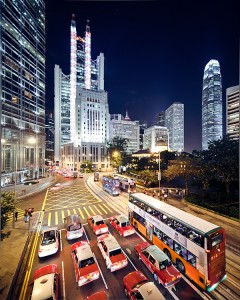 The Hong Kong The Government has announced that 500 charging stations for electric vehicles (EVs) will be installed for public use by the end of June this year. Together with the standard charging facilities installed by the private sector, this means that the total number of charging stations will reach 1,000.The Financial Secretary, Mr John C Tsang, officiated at a launch ceremony for government EV charging points at Star Ferry government car park. Following the completion of their installation, charging facilities at 18 government car parks in Hong Kong, Kowloon and the New Territories will commence operation by the end of June for use by EV users. “As an environmentally friendly means of transport, EVs have become more popular in recent years. By last month, there were more than 310 EVs in Hong Kong. As compared to 74 EVs in 2010, the increase in number is encouraging,” said Mr Tsang.”To promote the use of EVs it is essential to put in place a comprehensive public EV charging network. The 1,000 charging stations will be located in the 18 districts territory-wide. The network will facilitate not only the future development of EVs in Hong Kong but also enhance public confidence in using these vehicles. In addition to the standard charging facilities, the number of quick chargers in Hong Kong will be increased from five to 10 by the end of this year. “We will take the lead by introducing more EVs to the government fleet. At present, there are 33 EVs of various models in the government fleet. In the coming months an extra of 42 EVs will be delivered to various government departments for their use. We also plan to procure more than 140 new EVs of different types in this financial year,” Mr Tsang added.
The Hong Kong The Government has announced that 500 charging stations for electric vehicles (EVs) will be installed for public use by the end of June this year. Together with the standard charging facilities installed by the private sector, this means that the total number of charging stations will reach 1,000.The Financial Secretary, Mr John C Tsang, officiated at a launch ceremony for government EV charging points at Star Ferry government car park. Following the completion of their installation, charging facilities at 18 government car parks in Hong Kong, Kowloon and the New Territories will commence operation by the end of June for use by EV users. “As an environmentally friendly means of transport, EVs have become more popular in recent years. By last month, there were more than 310 EVs in Hong Kong. As compared to 74 EVs in 2010, the increase in number is encouraging,” said Mr Tsang.”To promote the use of EVs it is essential to put in place a comprehensive public EV charging network. The 1,000 charging stations will be located in the 18 districts territory-wide. The network will facilitate not only the future development of EVs in Hong Kong but also enhance public confidence in using these vehicles. In addition to the standard charging facilities, the number of quick chargers in Hong Kong will be increased from five to 10 by the end of this year. “We will take the lead by introducing more EVs to the government fleet. At present, there are 33 EVs of various models in the government fleet. In the coming months an extra of 42 EVs will be delivered to various government departments for their use. We also plan to procure more than 140 new EVs of different types in this financial year,” Mr Tsang added.
Energy-Harvesting-for-Electric-Vehicles-2012-2022.
 The electric vehicle industry – land, water and air – is rapidly rising to become a huge market of over $200 billion in 2022 at ex-factory prices. Some run entirely on harvested energy as with solar lake boats. Others recycle energy as with regenerative braking of cars, buses and military vehicles harvesting kinetic energy. Others use different forms of harvesting either to charge the traction batteries or to drive autonomous devices as we progress to the wireless vehicle. In some cases, harvesting is making completely new forms of electric vehicle possible such as “glider” Autonomous Underwater Vehicles (AUVs) that stay at sea for years and surface to gain electricity from both wave power and sunshine whenever necessary. Indeed, multiple forms of energy harvesting on one vehicle is becoming much more common from cars to superyachts. This report is the first to provide technical and marketing analysis of the rapidly growing market for energy harvesting in electric vehicles – land, water and air – with forecasts.
The electric vehicle industry – land, water and air – is rapidly rising to become a huge market of over $200 billion in 2022 at ex-factory prices. Some run entirely on harvested energy as with solar lake boats. Others recycle energy as with regenerative braking of cars, buses and military vehicles harvesting kinetic energy. Others use different forms of harvesting either to charge the traction batteries or to drive autonomous devices as we progress to the wireless vehicle. In some cases, harvesting is making completely new forms of electric vehicle possible such as “glider” Autonomous Underwater Vehicles (AUVs) that stay at sea for years and surface to gain electricity from both wave power and sunshine whenever necessary. Indeed, multiple forms of energy harvesting on one vehicle is becoming much more common from cars to superyachts. This report is the first to provide technical and marketing analysis of the rapidly growing market for energy harvesting in electric vehicles – land, water and air – with forecasts.
Awarding 100 Cars to 100 Nonprofits over 100 Days
Toyota today announced the 500 nonprofit organizations selected as finalists in its 100 Cars for Good program, a national philanthropic program in which the automaker will give away 100 vehicles to 100 nonprofits over the course of 100 days. Winners will be selected each day by the public through voting on Facebook. A complete list of finalists is available at www.100carsforgood.com. This is the second consecutive year for Toyota’s 100 Cars for Good, which is the first Toyota initiative to enlist the public’s help in determining how the company’s charitable contributions are awarded. The 500 finalists, selected from an extremely competitive pool, were certified by an independent panel of experts in philanthropy and corporate social responsibility. The finalists, which come from all 50 states and Washington, DC, represent nonprofits serving a broad range of community needs, including animal welfare, arts, education, environment, health, veterans’ affairs and safety.”Toyota congratulates all of this year’s finalists,” said Jim Lentz, President and Chief Executive Officer of Toyota Motor Sales. “We are grateful for the enormous impact that these nonprofits have each day, and we hope that 100 Cars for Good will play an important role in raising awareness of their work and helping these vital community organizations make an even bigger difference. We wish each of the finalists the best of luck and thank all of the nonprofit groups that participated in the application process.” 100 Cars for Good voting will begin May 14 and continue through August 21. Each day, five organizations will be profiled on Toyota’s Facebook page at www.100carsforgood.com. Individuals will be able to vote once each day for the nonprofit they think is most deserving of a new car. The organization with the most votes at the end of the day will win the vehicle. The four runners-up each day will receive a $1,000 grant from Toyota.Winning organizations can choose from the following vehicles: Camry Hybrid, Highlander SUV, Prius v hybrid, Sienna minivan, Sienna Mobility or Tundra full-sized pickup. A six-year, 100,000-mile powertrain warranty will also be provided for each vehicle, compliments of Toyota Financial Services. Toyota will be providing all 500 finalists with a digital video camera, training toolkit and free online advertising credits to support their 100 Cars for Good campaigns and to help them create or expand their presence in social media and other digital platforms. Each finalist will be asked to create a video showing how the organization plans to use a new vehicle to make an even bigger impact in the local community. Each video will be featured at www.100carsforgood.com.
BYD Technologies Dazzle at Beijing Auto Show
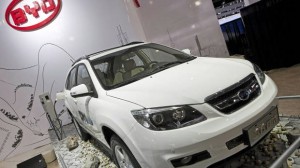 Today, BYD unveiled two new exciting models – the “F3 Plus” and the Dual Mode “Qin” (pronounced “Chin”) at 2012 Beijing International Auto Show. This year’s Auto show theme was “Innovate and Excel” and BYD did both displaying 3 new break-through technologies in their new vehicles. The BYD Qin is an intelligent, next-generation, highly-efficient dual-mode electric vehicle that uses BYD’s new, innovative Dual Mode II system with improvements over the first generation’s F3DM system. These improvements include: 7% better efficiency, power and energy-saving and in pure EV mode, the Qin can travel 50 km (31 miles) on a single 10 KWh charge. In hybrid mode, the Qin can use both its 110 KW electric motor and its 1.5 Turbo (TID) engine to output 223 KW of power and a whopping 440 Nm of torque. With this amazing torque, the Qin can accelerate from zero to 100 km/h (62 mph) in only 6.9 seconds and has a top speed of 185 km/h (115mph). In hybrid mode, the Qin requires just 16 RMB (~$2.50 USD) of energy per 100 Km (equating to a little less than 2 liters of fuel per 100 km or 118 mpg). The Qin is also equipped with the BYD “i” intelligent cloud system platform incorporating features like telematics, cloud-computing and a full-range of services 24 hours a day (like roadside assistance, vehicle positioning, remote monitoring, music and video downloads etc..). The new BYD F3 Plus best represents the Auto Show’s concept of “Excel.” The F3 Plus uses BYD’s self-developed, 1.5 Turbo-charged, Direct-injection, Dual Clutch engine and incorporates, as a standard feature, the break-through “Remote Driving Controller” technology—a first for a mass production vehicle. The Remote Driving Control technology allows many driving functions to be performed remotely with a specially design remote “key.” With the key in their hands, the driver can start the car, move it forward or back, turn left and right, and travel at a restricted speed all by itself, without the driver being inside the vehicle. It is a perfect solution when the parking space is not wide enough for the driver to exit the car once parked. In windy and rainy weather, drivers can remotely move their car for easy entrance. Finally, BYD displayed another first in EV technology features – standard Bi-directional Charging and Discharging technology able to allow vehicle-to-vehicle (V2V) discharging for stranded vehicle assists, Vehicle-to-Grid (V2G) and Vehicle-to-Load (V2L) solutions. This technology transforms your EV into a mobile energy storage station.
Today, BYD unveiled two new exciting models – the “F3 Plus” and the Dual Mode “Qin” (pronounced “Chin”) at 2012 Beijing International Auto Show. This year’s Auto show theme was “Innovate and Excel” and BYD did both displaying 3 new break-through technologies in their new vehicles. The BYD Qin is an intelligent, next-generation, highly-efficient dual-mode electric vehicle that uses BYD’s new, innovative Dual Mode II system with improvements over the first generation’s F3DM system. These improvements include: 7% better efficiency, power and energy-saving and in pure EV mode, the Qin can travel 50 km (31 miles) on a single 10 KWh charge. In hybrid mode, the Qin can use both its 110 KW electric motor and its 1.5 Turbo (TID) engine to output 223 KW of power and a whopping 440 Nm of torque. With this amazing torque, the Qin can accelerate from zero to 100 km/h (62 mph) in only 6.9 seconds and has a top speed of 185 km/h (115mph). In hybrid mode, the Qin requires just 16 RMB (~$2.50 USD) of energy per 100 Km (equating to a little less than 2 liters of fuel per 100 km or 118 mpg). The Qin is also equipped with the BYD “i” intelligent cloud system platform incorporating features like telematics, cloud-computing and a full-range of services 24 hours a day (like roadside assistance, vehicle positioning, remote monitoring, music and video downloads etc..). The new BYD F3 Plus best represents the Auto Show’s concept of “Excel.” The F3 Plus uses BYD’s self-developed, 1.5 Turbo-charged, Direct-injection, Dual Clutch engine and incorporates, as a standard feature, the break-through “Remote Driving Controller” technology—a first for a mass production vehicle. The Remote Driving Control technology allows many driving functions to be performed remotely with a specially design remote “key.” With the key in their hands, the driver can start the car, move it forward or back, turn left and right, and travel at a restricted speed all by itself, without the driver being inside the vehicle. It is a perfect solution when the parking space is not wide enough for the driver to exit the car once parked. In windy and rainy weather, drivers can remotely move their car for easy entrance. Finally, BYD displayed another first in EV technology features – standard Bi-directional Charging and Discharging technology able to allow vehicle-to-vehicle (V2V) discharging for stranded vehicle assists, Vehicle-to-Grid (V2G) and Vehicle-to-Load (V2L) solutions. This technology transforms your EV into a mobile energy storage station.
The 2012 Chevy Volt had its’ sales double in March
The 2012 Chevy Volt is available and waiting for Chicago area car shoppers to come and take it for a test drive at Chevrolet of Naperville. The plug-in hybrid car had its best sales month ever in March and sold 2,280 cars.
This number is more than double the amount it sold in February and is nearly 50 percent more than its previous best month ever. People are noticing what a great value this vehicle has and are flocking to the Chicago area Chevy dealership to see the 2012 Chevy Volt in Naperville, IL. Not only did the Volt surpass its previous record for sales, but it sold almost four times the amount of cars its chief electric rival, the Nissan Leaf did. Nissan sold 579 Leaf cars in March compared to the 2,280 Volts.
The Nissan Leaf is an all-electric vehicle, while the Volt offers both electric and gasoline power so drivers will never be without an option. The 2012 Chevy Volt in Naperville, IL has experienced a lot of extra attention as of late. With a great price, fantastic features and options and the ability to get up to 94 miles per gallon, the Volt is a hot commodity. The car is also very technologically advanced and with new smartphone apps from OnStar, called RemoteLink, drivers can even check the charge status or schedule a charge from their phone. Gas prices are on the rise and it is possible to drive the Chevy Volt for only about $1.50 per day. With a 35-mile distance, the car runs completely on electricity and most commutes are much shorter than that round trip.
AC Transit Fueling Buses with Hydrogen Made From Solar Electricity
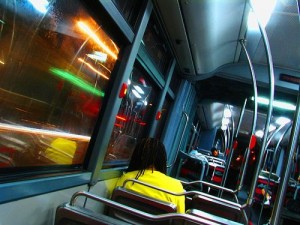 AC Transit, and a coalition of regional transit partners serving 7 million people in the San Francisco Bay Area, this week inaugurated the newest
AC Transit, and a coalition of regional transit partners serving 7 million people in the San Francisco Bay Area, this week inaugurated the newest  hydrogen production and dispensing station to fuel the latest generation of zero-emission fuel cell buses operating throughout the region. Congresswoman Barbara Lee and Chair of the California Air Resources Board Mary Nichols were joined by over 300 guests and a dozen other federal, state, and local officials as they formally dedicated the station at AC Transit’s Emeryville division, where hydrogen to fuel the fleet is produced in part by solar-powered electrolysis. AC Transit General Manager David Armijo said, “For over a decade, AC Transit has been developing the most comprehensive, zero-emission, fuel cell transit program in North America, and operating zero-emission buses in real-world service.
hydrogen production and dispensing station to fuel the latest generation of zero-emission fuel cell buses operating throughout the region. Congresswoman Barbara Lee and Chair of the California Air Resources Board Mary Nichols were joined by over 300 guests and a dozen other federal, state, and local officials as they formally dedicated the station at AC Transit’s Emeryville division, where hydrogen to fuel the fleet is produced in part by solar-powered electrolysis. AC Transit General Manager David Armijo said, “For over a decade, AC Transit has been developing the most comprehensive, zero-emission, fuel cell transit program in North America, and operating zero-emission buses in real-world service.
Now, with increased fueling capacity, we have a greater capability to offer clean, quiet, zero-emission transportation to the communities we serve.” “AC Transit continues to be a model for the rest of the nation,” said Congresswoman Lee. “Today’s unveiling of these innovative, zero-emission fuel cell buses and this state-of-the-art HyRoad Fueling Station further highlights AC Transit’s commitment to excellence in promoting and maintaining zero-emission vehicles.” California Air Resources Board Chair Nichols added, “We are building on a record of success and partnership between the federal and state governments and AC Transit – which has truly been a pioneer in bringing fuel cell technology into the community and demonstrating its virtues for clean air and energy efficiency.”AC Transit’s newest on-site energy station, engineered by Linde North America, Jacobs, and EPC, and built by W.L. Butler Construction, demonstrates the use of “renewable” hydrogen – hydrogen produced using Proton OnSite’s solar-powered electrolyzer. Engineering and construction firm Cupertino Electric, Inc. installed a 510 kilowatt DC solar photovoltaic system for AC Transit that will generate energy to help fuel the transit system’s hydrogen-powered buses running throughout the Bay Area. Read the full article: AC Transit Begins Fueling Buses with Hydrogen Made From Solar Electricity and Water
Governor Brown Announces $120 Million Settlement to Fund Electric Car Charging Stations Across California
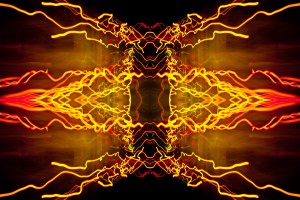 Governor Edmund G. Brown Jr. joined with the California Public Utilities Commission today to announce a $120 million dollar settlement with NRG Energy Inc. that will fund the construction of a statewide network of charging stations for zero-emission vehicles (ZEVs), including at least 200 public fast-charging stations and another 10,000 plug-in units at 1,000 locations across the state. The settlement stems from California’s energy crisis. The Governor also announced that he has signed an executive order laying the foundation for 1.5 million zero-emission vehicles on California’s roadways by 2025.
Governor Edmund G. Brown Jr. joined with the California Public Utilities Commission today to announce a $120 million dollar settlement with NRG Energy Inc. that will fund the construction of a statewide network of charging stations for zero-emission vehicles (ZEVs), including at least 200 public fast-charging stations and another 10,000 plug-in units at 1,000 locations across the state. The settlement stems from California’s energy crisis. The Governor also announced that he has signed an executive order laying the foundation for 1.5 million zero-emission vehicles on California’s roadways by 2025.
“This executive order strengthens California’s position as a national leader in zero-emission vehicles,” said Governor Brown, “and the settlement will dramatically expand California’s electric vehicle infrastructure, helping to clean our air and reduce our dependence on foreign oil.” The settlement announced today resolves ten-year-old claims against a subsidiary of Dynegy Inc., then a co-owner with NRG of the portfolio of power generating plants currently owned by NRG in California, for costs of long-term power contracts signed in March 2001. Read the full article:Governor Brown Announces $120 Million Settlement to Fund Electric Car Charging Stations Across California
